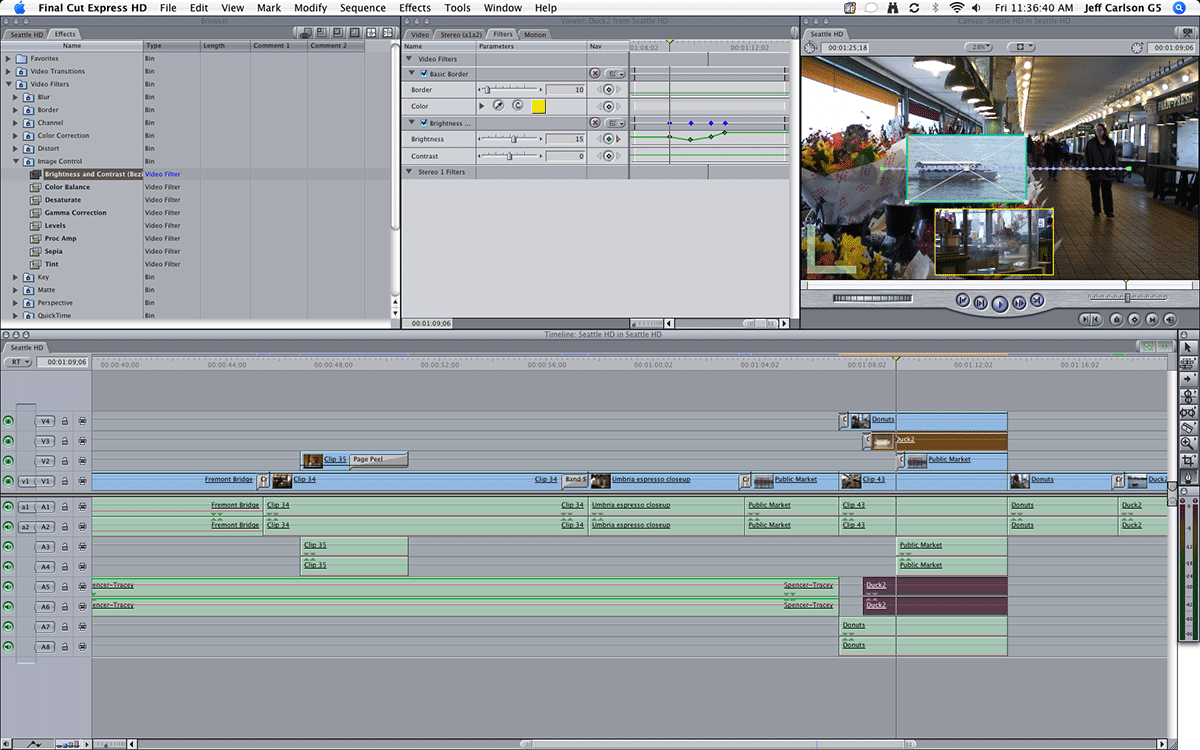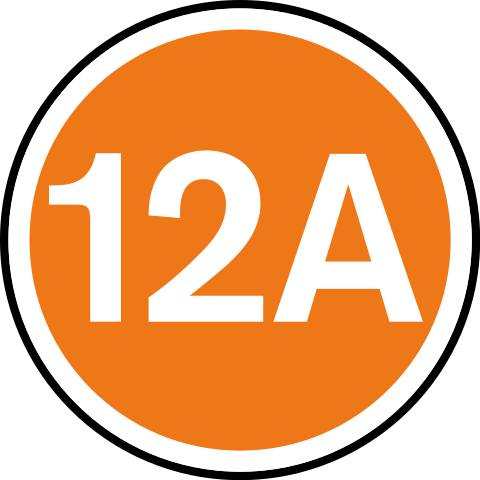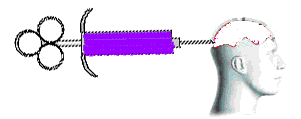Question 7: Looking back at your preliminary task, what do you feel you have learnt in the progression from it to the full product?
Sian Hayler-Magenis AS Media
Candidate number: 6255
Monday 30 April 2012
Evaluation - Question 6
Question 6: What have you learnt about technologies from the process of constructing the product?
When filming and editing our film opening, we used different technologies to help us learn about new things and construct our work in new ways.
 One of the first pieces of different technology used was that all our editing was done on an iMac- most of the group had only ever used Windows computers before, so as a group we all learnt how to use a Mac computer. I personally had used Mac computers before, but I learnt more with having to use it over time. The Mac was used mainly in order to use the programs on there- iMovie and Final Cut Express; programs that you can't get on a Windows computer.
One of the first pieces of different technology used was that all our editing was done on an iMac- most of the group had only ever used Windows computers before, so as a group we all learnt how to use a Mac computer. I personally had used Mac computers before, but I learnt more with having to use it over time. The Mac was used mainly in order to use the programs on there- iMovie and Final Cut Express; programs that you can't get on a Windows computer.
When filming and editing our film opening, we used different technologies to help us learn about new things and construct our work in new ways.
I found that iMovie was a rather simple program that had a range of useful effects, despite being limited. It was easy to use with a simple timeline with effects such as transitions easily applicable to clips. I particularly found that the sound library accompanied with iMovie was very useful as we were able to use some of the sound clips in our final cut, alongisde royalty free music we found ourselves. I didn't haev any problems getting used to iMovie since I had used an older version before, but I still learnt about some new features I didn't know of before. There were weaknesses to iMovie, however- some simple things that wanted to be done couldn't, unlike with Final Cut Express. iMovie was mostly used for our remake of a film opening but was also used a little in our actual film opening.
 |
| The layout for Final Cut Express |
Final Cut Express was a program new to all of us, but I did have some previous knowledge that could be applied when using it- I had used Sony Vegas before, which is arguably the Windows equivalent of Final Cut Express. We were given a session beforehand on how to use Final Cut Express which we all found benefitial as it quickly taught us the basics. Editing in Final Cut Express took a while to get used to, but we all learnt how to do simple things such as splice clips and sort out audio fairly quickly. Other things, such as seperating the audio from the video clip, took more time as we had to work it out ourselves.
Final Cut Express was particularly useful for things such as titles- I was able to freely move around text, which I couldn't do in iMovie. There was a wide range of fonts that could be used which helped aid us in making sure the titles fit the generic conventions of comedy. There were also effects that could be applied to titles or clips in general- such as making things glow, distort, 3D effects, etc. We only used one effect that was on the main title of the film to help it stand out from the others, but we found it really enhanced it.
I personally found that whilst Final Cut Express was a lot more in depth and detailed than iMovie that allowed us to develop our film opening a lot, it was a bit fiddly and difficult to get used to (in comparison to Sony Vegas) which might've slowed us down a bit, but overall the program was effective. If I could re-do the opening with my current knowledge of Final Cut Express I would probably plan beforehand the sorts of effects and things I'd want on clips in order to be more organised.
When filming, we used a tripod and a HD camera called Panasonic HDC-TM900. The tripod was useful for keeping shots steady although I think to improve we could've used it more, as some shots were held by hand and the framing would've been made better with a tripod. We had used a different camera for our pleminary task, which was then changed to the HD camera when we started our film remake. It was easy to use and helped with the way our final clips looked, as we could see on the screen if lighting needed to be adjusted.
On the day of filming we also brought another camera with us- Lauren's camera, a Nikon D3100. This was to help us with the clips for the filming diary as well as give us any back up clips needed. In the final cut we didn't actually use any clips from that camera, but it was handy as a back up in case any other shots were lost or we wanted a different kind of shot.
In order to log our coursework, we used Blogger- a blogging interface that allowed us to easily make seperate posts that were uploaded online. YouTube was also used to upload our videos onto- also simply done and annotations could be used as part of our evaluation. I personally found both of these websites very useful.
Overall, I think that using new and different technologies such as Final Cut Express and a HD camera allowed us to create and develop our film opening effectively, although there were some weaknesses and things we could've done to improve.
Friday 27 April 2012
Evaluation - Question 5
Question 5: How did you attract/address your audience?
The answer to this question is seen through annotations in the video above.
The answer to this question is seen through annotations in the video above.
Thursday 26 April 2012
Evaluation - Question 4
Question 4: Who would be the audience for your media product?
 We originally decided during planning for the certification of our film to be a 12A- we have decided to still stick with this certification after having finished our final cut.
We originally decided during planning for the certification of our film to be a 12A- we have decided to still stick with this certification after having finished our final cut.
 With regards to audience theories, I still think that the main theory which applies to our piece is the hypodermic needle theory. This is a common audience theory used with comedy films, as the audience is able to be passive and purely intake the information given without having to put too much thought into what is going on- meaning that the storyline and characters are simple to understand. A passive audience is an audience that only receives the information as a form of entertainment and doesn't do anything else with it, such as relate it to own ideas or question it.
With regards to audience theories, I still think that the main theory which applies to our piece is the hypodermic needle theory. This is a common audience theory used with comedy films, as the audience is able to be passive and purely intake the information given without having to put too much thought into what is going on- meaning that the storyline and characters are simple to understand. A passive audience is an audience that only receives the information as a form of entertainment and doesn't do anything else with it, such as relate it to own ideas or question it.
However, the hypodermic needle theory applies more to popular mainstream films than it does to independent films- which is why I think another theory may be revelant. The other theory I think may still apply (but not as much as the hypodermic needle theory) is the uses and gratifications theory. The uses and gratifications theory means that the audience is active- they could find the film relatable to their own lives; use it to escape their own lives as a form of entertainment and learn more about relationships and social interaction. For example, someone watching our film may relate one of the main male characters to themselves due to the stereotypes used, which are common but relatable to teenage culture.
 We originally decided during planning for the certification of our film to be a 12A- we have decided to still stick with this certification after having finished our final cut.
We originally decided during planning for the certification of our film to be a 12A- we have decided to still stick with this certification after having finished our final cut.
From research we know that a lot of comedy films are often of a 12A certification or above, normally due to factors such as there being violence or swear words. Whilst this is not necessarily seen in our opening, it will be something considered later on, which is why we chose this certification.
Specifically, I think that our film would attract mostly to teenage boys (13-18 years old) who are into comic books and super heroes- this is mainly because of the themes running throughout our film as well as the storyline as a whole. From research we know that action and comedy as well as things like super heroes are stereotypically enjoyed more by males than females.
The demographic group we decided the audience would be for our film opening were groups E and D. I still think this is the case after having completed the final cut, with the emphasis still focused on students. Demographic group E are students and our target audience is of around 13 to 18 years old- group D has also been considered to cover people who may be in part time employment. Nevertheless, this doesn't mean that our film is limited to this audience and may appeal to other people.
 With regards to audience theories, I still think that the main theory which applies to our piece is the hypodermic needle theory. This is a common audience theory used with comedy films, as the audience is able to be passive and purely intake the information given without having to put too much thought into what is going on- meaning that the storyline and characters are simple to understand. A passive audience is an audience that only receives the information as a form of entertainment and doesn't do anything else with it, such as relate it to own ideas or question it.
With regards to audience theories, I still think that the main theory which applies to our piece is the hypodermic needle theory. This is a common audience theory used with comedy films, as the audience is able to be passive and purely intake the information given without having to put too much thought into what is going on- meaning that the storyline and characters are simple to understand. A passive audience is an audience that only receives the information as a form of entertainment and doesn't do anything else with it, such as relate it to own ideas or question it.However, the hypodermic needle theory applies more to popular mainstream films than it does to independent films- which is why I think another theory may be revelant. The other theory I think may still apply (but not as much as the hypodermic needle theory) is the uses and gratifications theory. The uses and gratifications theory means that the audience is active- they could find the film relatable to their own lives; use it to escape their own lives as a form of entertainment and learn more about relationships and social interaction. For example, someone watching our film may relate one of the main male characters to themselves due to the stereotypes used, which are common but relatable to teenage culture.
Wednesday 25 April 2012
Evaluation - Question 3
Question 3: What kind of media institution might distribute your media product and why?
Tuesday 24 April 2012
Friday 20 April 2012
Evaluation - Question 1
Question 1: In what ways does your media product use, develop or challenge forms and conventions of real media products?
Subscribe to:
Posts (Atom)
)-1WebA1001001A11C18A22814F02436.jpg)